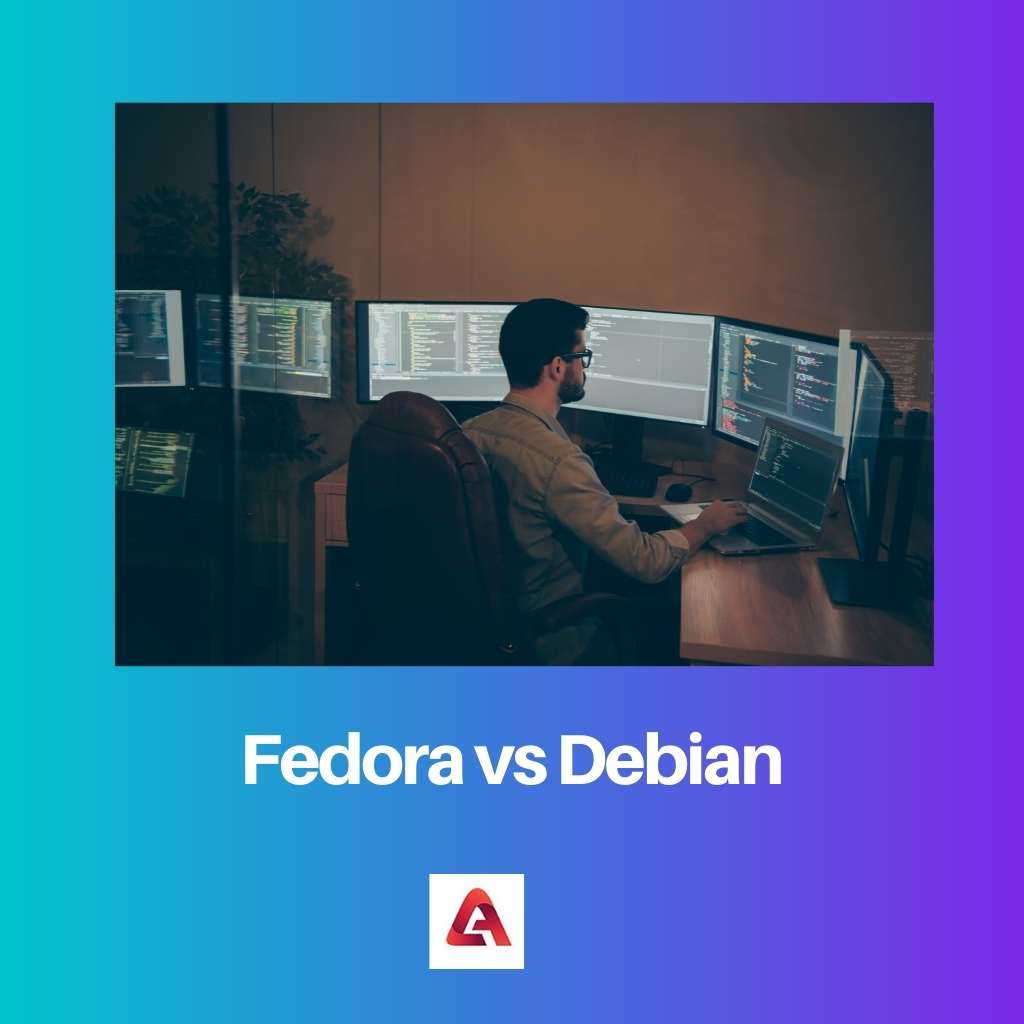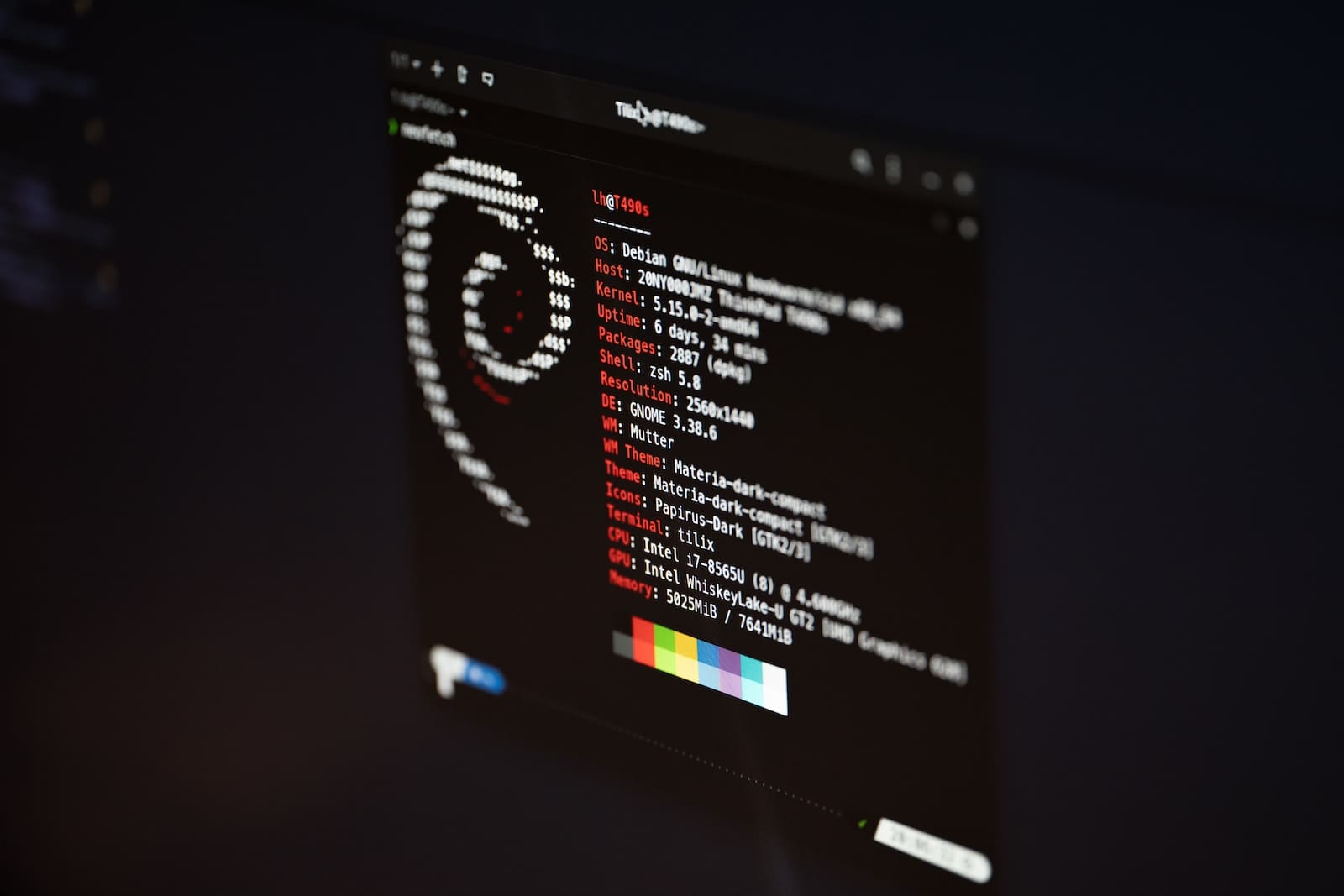Both Fedora and Debian are Linux-based operating systems adhering to the open-source principles. The Debian project was started in the early 1990s and it is older than Fedora Linux.
Though both of them are Linux OS, there are several distinguishing factors between them. A user must make a choice between Fedora and Debian based on software and hardware support, stability, release cycles, etc.
Key Takeaways
- Fedora is a Linux distribution sponsored by Red Hat, focused on providing the latest open-source software and technology.
- Debian is a community-driven Linux distribution, emphasizing stability and strict free software philosophy.
- Fedora offers more frequent updates and cutting-edge features, while Debian prioritizes stability and long-term support.
Fedora vs Debian
Fedora is a Linux OS kernel architecture-based open-source OS platform that contains only free software applications and uses the RPM format and package manager. Debian is an OS and Linux distribution that has free, non-free, and contribute repositories and uses the deb format, dpkg package manager.

Fedora is an open-source Linux -based operating system that is backed by the Red Hat Enterprise. It is available for free of cost to the users and can be integrated with various applications and packaged software.
Fedora is one of the most common distributions of Linux after Ubuntu.
The Debian project was started in 1993 and it has become one of the largest online communities in the world.
The latest version of Debian in the market is Debian version 11 with the codename “Bullseye” and the upcoming version has the codename “Bookworm.” Ubuntu Linux, a very popular Linux OS is based on Debian.
Comparison Table
| Parameters of Comparison | Fedora | Debian |
|---|---|---|
| Organization | Fedora is a community that is backed by RHEL (Red Hat Enterprise Linux). | Debian is a community-driven project and it is one of the largest communities in the world. |
| Launch | Warren Togami is the founder of the Fedora project and it was launched in 2003. | Debian is the integrated part of the Debian project founded by Ian Murdock in 1993. |
| Importance | Fedora is best for those users who are looking for the latest Linux software. | Debian is created especially for desktop and workstation users with the best software and hardware support. |
| Packages | Fedora has less packaged than Debian, around 20,000. | Debian has more than 60,000 packages. |
| User-friendly | Fedora is very easy to use even for beginners. | Debian is best for intermediate Linux users. |
| Hardware | Fedora doesn’t have good hardware support as Debian and it has also dropped support for 32-bit processors. | Debian can support old hardware and multiple processor architectures. |
| Stability | Fedora is not as stable as Debian. | Of all the Linux-based OS, Debian has the greatest stability. |
| Support | Paid customer support is not available on Fedora but available on RHEL. | Paid consultants can be hired for Debian support. |
| Release cycles | Released twice every year. | Released once in two years. |
What is Fedora?
Fedora is updated regularly, as new versions of the OS are released twice in a single year. Fedora is a combination of both unique features as well as unexpected weaknesses.
One of the disadvantages of using Fedora is that it has limited software repositories. It also requires a long time to set up and there is no standard model for multi-file objects.
While working in Fedora, one cannot work on a different server in real-time as Fedora has its own server. But, apart from these disadvantages, the number of advantages in working with Fedora is outnumbered.
Fedora is a very reliable operating system that is easy to use for the beginner level of Linux users. The OS updates automatically and it can support a wide range of file formats.
The enhanced security features (has a powerful firewall) of this OS are one of the best things about Fedora. This OS comes with several pre-installed software like Internet Browser, Libre Office Suite, PDF, and Word files Viewer, etc.
Fedora is appropriate for desktop users providing a very smooth interface using the GNOME desktop environment. There is always something new and exciting about Fedora as the latest version of the OS is released frequently.
To install Fedora in a system, the minimum requirements are a 1GHz processor, 1GB RAM, and 10GB space on the hard drive.

What is Debian?
Debian OS is very popular especially because it’s a very stable operating system and can be used in old hardware. Debian has three branches that are maintained regularly, namely, stable, testing, and unstable branches.
The stable branch deals with the current release to see which software needs to be tested to resolve the bigs and then release it.
The testing branch is the experimental branch and the unstable branch is the one used by software engineers where packages are allowed without a full check and most up-to-date libraries are available.
Debian is a very stable and dependable OS where each version of it can be used for the long term. It also supports a wide range of PC architectures.
Debian allows to install and run the OS in both 32 and 64-bit Intel computers and also in 64-bit PowerPC machines. For desktops, the minimum requirement for installing Debian is a 1GHz processor, 512MB RAM (minimum), and 10GB hard drive capacity.
The software support of Debian is also very impressive. The DEB format of Debian is the most common app format in the Linux community and its software repository is one of the largest.
Having a strong internet connection is not a prerequisite for using Debian.

Main Differences Between Fedora and Debian
- Though Fedora and Debian are both open-source community software Fedora is backed by RHEL whereas Debian isn’t.
- Fedora was launched in the market in 2003 whereas Debian was launched in 1993.
- Fedora has fewer packages (almost one-third) than Debian.
- Fedora is very easy to learn for beginners but it is not very user-friendly whereas Debian is for intermediate Linux users but much more user-friendly.
- Fedora doesn’t have hardware support as good as Debian, as the latter also supports very old hardware.
- Fedora is less stable than Debian.
- Paid customer support is not available for Fedora but it is available for Debian.
- Fedora is released twice in one year whereas Debian is released once in two years.

